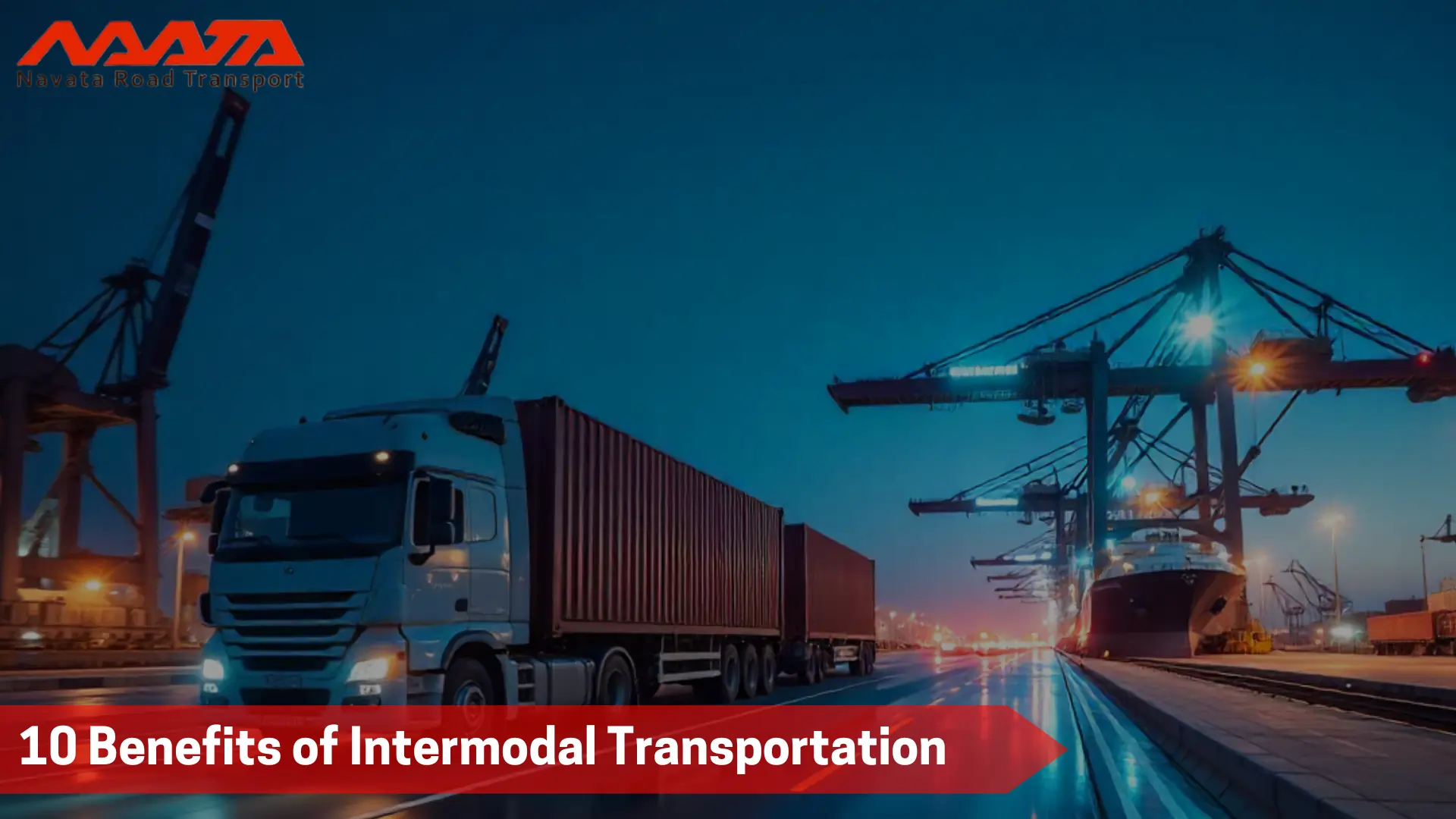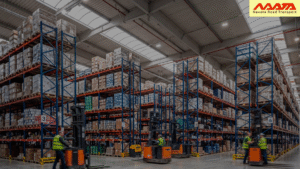
10 Benefits of Intermodal Transportation: A Smarter Logistics Strategy for Modern Shippers
Table of Contents
10 Benefits of Intermodal Transportation
Logistics professionals are under pressure to keep freight moving—without breaking budgets or compromising service. This is where the benefits of intermodal transportation come into play.
Intermodal freight refers to moving goods using multiple modes of transportation—typically truck, rail, and sometimes sea or air—without handling the cargo directly when switching modes. The freight remains in one container, making the process faster, safer, and more efficient.
Let’s explore the intermodal shipping advantages that make this mode an essential part of any successful intermodal logistics strategy.

You May Also Like to Read: 4 Best Transportation Types For Moving Your Goods
1. Significant Cost Savings in Logistics
Intermodal transportation is often cheaper than full truckload (FTL)—especially for distances over 700 miles. By combining cost-effective rail with flexible trucking, businesses reduce fuel, labor, and toll costs.
When used strategically, intermodal can result in 10% to 30% lower costs compared to over-the-road trucking. These savings directly impact your bottom line, making intermodal a powerful tool for long-term logistics cost reduction.
2. Consistent and Reliable Capacity
Truckload markets are known for their volatility—shortages, rate spikes, and seasonality can all disrupt delivery schedules. Intermodal helps overcome this with more consistent capacity, particularly on high-volume lanes.
With rail moving hundreds of containers per trip, intermodal freight adds stability to your shipping operations. It’s not about replacing trucking—it’s about combining strengths. Many successful shippers use intermodal logistics strategy to reduce reliance on one mode.
3. Environmentally Sustainable Option
Switching to intermodal is one of the fastest ways to cut your carbon footprint. Rail can move one ton of freight over 450–500 miles using just one gallon of fuel, making it up to four times more efficient than trucking.
This environmental advantage helps companies:
- Reduce greenhouse gas emissions
- Comply with new regulatory standards
- Achieve sustainability goals and green certifications (e.g., SmartWay)
In an era where sustainability matters to both customers and regulators, intermodal freight is a smart and responsible move.
You May Also Like to Read: Emerging Modes for Green Transportation in 2025
4. Secure and Damage-Resistant Shipping
One of the lesser-known intermodal shipping advantages is security. When freight moves on rail, it’s harder to access, and the containers are not left unattended—unlike long-haul trucking where theft and tampering are more common.
Also, the cargo stays sealed inside one container for the entire trip. Less handling means lower risk of damage, making intermodal a safer option for valuable or sensitive goods.
5. Alleviates Road Congestion and Noise Pollution
A single train can take 280+ trucks off the road. That’s fewer vehicles on highways, less traffic, and reduced noise pollution. This isn’t just good for the environment—it benefits businesses too.
When fewer trucks clog the roads, transit times become more predictable, deliveries arrive faster, and driver stress is reduced. Intermodal freight indirectly improves efficiency for the entire logistics network.
6. Flexibility in an Unpredictable Market
Regulations, fuel prices, labor shortages, and global disruptions make logistics unpredictable. Intermodal logistics strategy gives shippers more options when the market shifts.
For example, if truck capacity tightens, more freight can shift to rail. If fuel prices spike, intermodal still maintains cost advantages. This built-in flexibility reduces your exposure to risk and makes your supply chain more resilient.
7. Great Fit for Cross-Border Shipments
When moving goods across the U.S., Canada, or Mexico, intermodal proves extremely effective. Cross-border intermodal services streamline customs processes, reduce border delays, and improve documentation flow.
Because the freight stays in one container, there’s less paperwork, fewer inspections, and better control of transit timelines. Plus, security is stronger—especially in regions like Mexico where highway cargo theft is a concern.
8. Perfect for High-Volume or Scheduled Freight
If your business has recurring, high-volume shipments, intermodal freight offers strong advantages. For example:
- Retailers with fixed delivery appointments can pad rail transit times to ensure on-time arrivals.
- Warehouses near intermodal ramps can reduce drayage costs and improve delivery precision.
- Heavy or bulk freight moves more cost-effectively on rail over long distances.
This makes intermodal a top choice for supply chains that value consistency and scalability.
9. Strong Tracking and Visibility Tools
Thanks to technology, intermodal visibility is now on par with—or even better than—traditional trucking. Modern systems offer:
- Real-time GPS tracking
- Automated alerts
- Accurate ETAs and delivery confirmations
This data helps logistics teams plan better, solve issues faster, and keep customers informed. Visibility is no longer a limitation of intermodal—it’s an asset.
10. Infrastructure Keeps Improving
Investments in intermodal terminals, rail networks, and road access are growing. As infrastructure improves, so does the efficiency and reliability of intermodal services. This means faster transfers, reduced wait times, and better coordination across modes.
With more intermodal hubs opening and rail carriers enhancing their services, now is the best time for shippers to consider this mode seriously.

Conclusion
Intermodal transportation isn’t a trend—it’s a smarter, more strategic approach to logistics. With rising costs, tighter regulations, and increasing demand for sustainability, shippers need every advantage they can get.
By combining modes and using each for its strengths, intermodal freight helps you unlock:
- Lower costs
- Better service reliability
- Increased capacity
- Reduced environmental impact
Whether you’re rethinking your logistics strategy or just exploring alternatives, the benefits of intermodal transportation are too significant to ignore. The future of freight is flexible, cost-effective, and green—and intermodal is leading the way.
Thank You For Reading: 10 Benefits of Intermodal Transportation: A Smarter Logistics Strategy for Modern Shippers
Powered By: 360Presence








